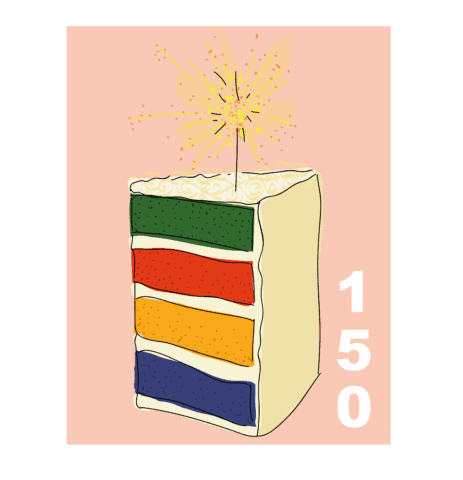Though responses to the ensuing Canada 150 celebrations will no doubt vary from scathing critiques to passionate defences of the sesquicentennial celebrations, interpretations in the eyes of the individual might be key to understanding the event’s gravity.
In my honest attempt at navigating the complex relationship between our country and its past, I ultimately drew from my own experiences. To me, the story of Canada 150 begins in a grade-three class in the suburbs of Ottawa.
How can a country be only 100 years old? I can remember asking my parents this question during supper the evening after attending my first-ever Canadian history class. I knew that China had been on the earth for over three millennia, but as a nine-year-old Chinese immigrant, I couldn’t wrap my mind around the concept of nationhood.
Fast forward almost 15 years and I, like many others, am constantly bombarded with conversations about Canada 150 celebrations. Fireworks and festivals are already filling up every weekend this summer. Canadian memorabilia line the walls of every aisle in Hudson’s Bay.
The Constitution Act of 1867, the anniversary of which we will celebrate with Canada 150, formed the fundamental core of our constitution. Since then, and also prior to confederation, countless tragedies in Canadian history can all be tied to our colonial past. If nation-building is an ever-evolving portrait, Canada’s canvas has its share of blemishes. Our mistreatment of Indigenous peoples and marginalized groups is undeniably woven into the fabric of our day-to-day lives.
Every Via Rail pass purchased is a reminder of the Chinese head tax, first levied after the Canadian parliament passed the Chinese Immigration Act of 1885 to discourage Chinese people from entering Canada after the completion of the Canadian Pacific Railway.
Every classroom presentation is a reminder that the last residential school, the Gordon Indian Residential School located in Saskatchewan, was closed only 21 years ago.
How do we come to terms with our country’s history as we approach the eve of Canada 150? Truthfully, I don’t have an answer. That’s because my portrait of Canada is one that has been blessed with countless opportunities and privileges. For all of the hardships that I’ve endured — which my parents experienced tenfold — I wouldn’t hesitate to call myself Canadian.
Not all Canadians share my experience, because not all who live in our country have been given the same opportunities and privileges. Not all Canadians can easily reconcile with our history, because not all Canadians bare its scars. I do, however, believe that we can acknowledge how far we’ve come while still grappling with how much more needs to be done. I have hope for Canada 150.
In part, through celebrating our Canadian identities and values, while imperfect, we remind ourselves of their relevance. We stand in the wake of the Truth and Reconciliation Commission’s Calls to Action. We live in a time where escalating tensions in international relations are poised to fundamentally change global politics. In recognizing what we stand for as nation, we also remind ourselves whom to stand for and whom to stand with.
I truly believe in the power of dialogue and conversation. When we share our own stories, we help give meaning to these celebrations. When we listen to others’ stories, we understand the impact of these celebrations. There will undoubtedly be contradictions and opposing viewpoints in this debate — such is the identity of our multicultural country.
Let’s think of these celebrations as an opportunity for reflection and expression. Just as our votes can change a governing party, our voices can change the future of Canadian identity.
Canada 150 should mean a lot to us as students. The conversation surrounding our national identity and the debates fostered by these celebrations will shape the discourses in what’s to come: our futures. Canada 200 will be a reflection of who we are in 50 years. After all, the only way for us to have a more representative and inclusive bicentennial is for our peers to understand what was missed this time.
—
Kehan Fu
Graphic: Lesia Karalash / Graphics Editor